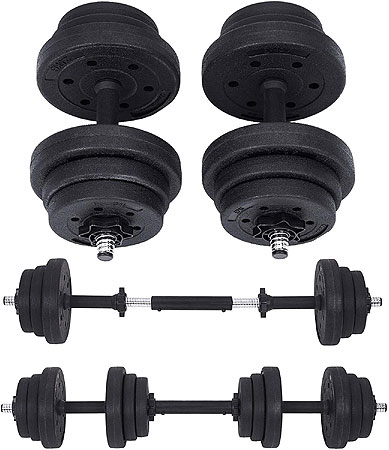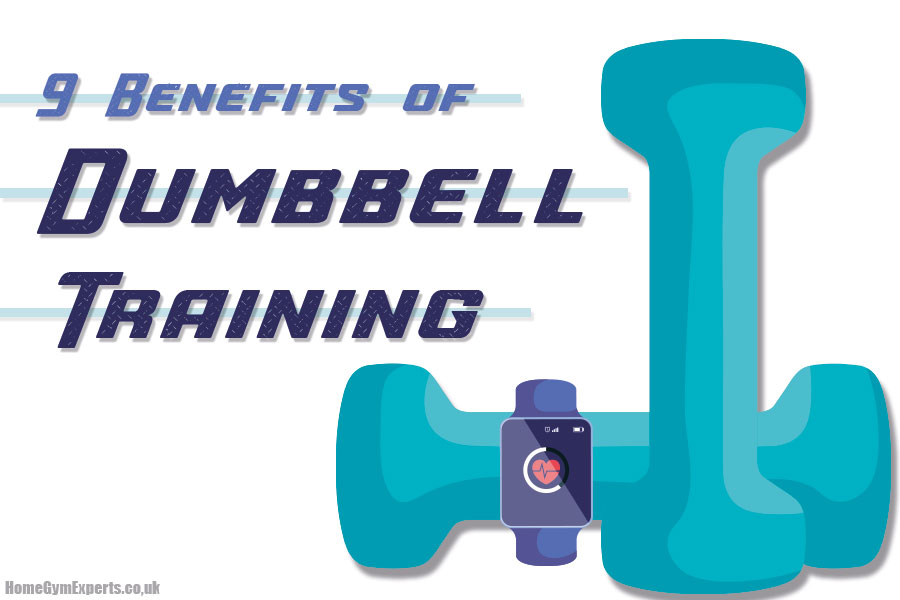Watching videos on Youtube, or reading about this cheap alternative to costly dumbbells online might seem like a good idea but are these concrete-filled weights safe?
In this guide, we’re looking at some of the reasons you might want to skip on this fitness trend.
Why concrete dumbbells can be dangerous
They take longer to set than people think
Although your homemade dumbbell might feel as solid as a rock a day or so after you’ve made them, concrete can actually a long time to completely ‘set’, or cure.
You can normally walk on concrete after 24 to 48 hours but it won’t reach its full strength for a whopping 28 days! Chucking your new dumbbells around any time less than that is really risky.
The handle might not be safe
While it might sound crazy, one of the main materials used in making homemade dumbbells and weight sets is PVC piping. This hollow plastic tube is a popular go-to for anyone making their own weights at home.
This material is not designed to be used to support 15kg, 20kg, 30kg … or any weight. Some of the pipe is normally filled with concrete but it’s just not designed for this kind of stress.
Ouch! Concrete is unforgiving to the human body
One problem we see with concrete weights is less about them falling on you and more about how sharp and unforgiving concrete is. Free weights are always going to come in contact with your skin and muscles themselves and you can really knock, graze and even cut yourself.
If you’re going to use concrete or cement, make sure you cutaways any sharp bits and use a smooth bucket or plastic pot for your mould.
Concrete can crack over time
Another problem with free weights is you’ll likely not want to always place them down carefully. The great thing with rubber-coated dumbbells is you can drop them from a foot or more without any great problem.
Concrete is absolutely not designed to be moved around at all, let alone dropped.
Concrete hand weights can lead to some seriously grotesque injuries
A secondary danger is that once this happens, like a Warner brother Wile Cayote cartoon, the second bit of the weight will then be lop-sided and come crashing down too. Depending on which exercise you’re doing, you can expect any of these injuries:
- Facial injuries
- Broken toes (there’s a reason builders wear steel toe-capped boots!)
- Serious cuts and bruises
They haven’t passed safety standards
Whether you buy your homemade concrete barbells and dumbbells on places like eBay or make them yourself, the problem is they aren’t tested to check they’re actually safe. Those rubber hex dumbbells might cost a fortune but at least they’ve had to undergo UK safety standards testing.
Related Guides
- Best Rubber Hex Dumbbells
- Top 5 Bench & Weights Packages You Can Buy Today
- Dumbbell Buying Guide
- Help! My Muscles Are Still Sore After 4 Days!
- Are Dumbbells Safer Than Barbells?
If there are safety concerns, why would anyone use a concrete dumbbell?
They’re dirt cheap
Everyone loves weights but the problem is dumbbells can get expensive. Especially as you have to buy a pair and it’s not long before you’ll need more than one.
It wasn’t long before fitness fans figured out a cheap way to make their own weights, using something that’s already naturally heavy – good old concrete. It’s dense, cheap and easy to make and sets very quickly.
You can get any size you want (and as many sets as you want)
And it’s also fairly straightforward to get approximately the right weighty, with moulds allowing you to whip up dumbbells of any size easily. One of the major drawbacks with dumbbells of any kind is that you’ll need a larger size as you get stronger and also different weights for working out different muscle groups.
They look great!
If you take time and get the dumbbells right, they can look pretty incredible, with smooth lines and a minimalist look.
Concrete is always in stock
Through 2025, concrete dumbbells had a HUGE leap in popularity due to the fact that it was nearly impossible to get fitness gear online and everyone wanted to be able to work out from home.
There were many youtube videos on how to make your own weights to use at home, along with different blogs and Facebook posts detailing the process.
A safe kind of concrete Dumbbells
The more dangerous kinds of dumbbells – the homemade concrete ones should probably be avoided, but that’s not to say all weights made from this cheap filling are bad.
Places like Amazon have some really clever (and cheap) concrete-filled dumbbells that tick all the boxes for making them yourself (without the risk of them dropping to bits.

Hidden dangers of filled weights
Another thing we’ve seen a lot of is people selling homemade weights online, or offloading their old sets on eBay. Buying these could be a recipe for disaster as there’s no confirmation of how the weights are assembled.
The main issue is whether there are cross-bolts holding the concrete in place on either end. Normally some kind of metal pin is used as a skeleton to hold the concrete blocks in place but it’s impossible to tell just by looking at the dumbbell from the outside.
Conclusion: are concrete dumbbells safe?
Training with homemade weights is a tempting proposition; an unlimited selection of weights all for the price of a bag of cement and a few bits of PVC pipe.
But we definitely don’t recommend this as it’s just too risky. If you still want to use these cheaper alternatives, don’t buy them second hand, where you can’t see how the weights are made.
A far better solution is to go for something like an adjustable set of dumbbells or take a look at some of the cheaper (and safety tested) concrete-filled weights somewhere like Amazon.
References and Further Reading
- Blackpool Gazette – Warning to fitness fans of the dangers of using ‘homemade’ equipment
- Fitt.co – Sold Out: The Fitness Equipment Shortage
- Howard G Davies & Associates – What European and UK standards or regulations apply to strength products
- Dynamic Concrete Pumping – How Long Does Concrete Take to Cure Completely?









